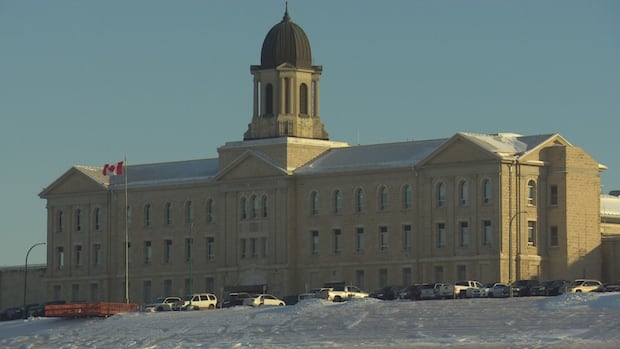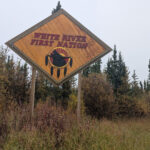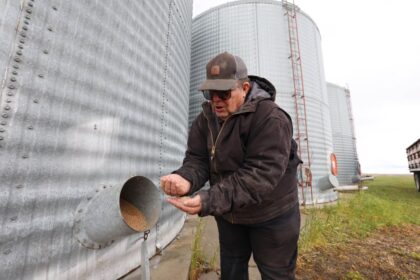IndigenousA report by the United Nations Working Group on Arbitrary Detention says it’s “deeply concerned” about the continuing overrepresentation of Indigenous people in Canada’s justice system, as it echoes findings from its 2005 visit.Report says in some provincial facilities, 70 or 80 per cent of inmates were IndigenousCandace Maracle · CBC News · Posted: Sep 12, 2025 5:52 PM EDT | Last Updated: 2 hours agoStony Mountain Institution is a federal prison near Winnipeg. (Justin Fraser/CBC)A report by the United Nations Working Group on Arbitrary Detention says it’s “deeply concerned” about the continuing overrepresentation of Indigenous people in Canada’s justice system, as it echoes findings from its 2005 visit.According to the report, published Aug. 4, data from 2023 showed Indigenous people made up about five per cent of Canada’s adult population but 32 per cent of detainees in federal custody and 50 per cent of all incarcerated women. In some provincial detention facilities, up to 70 or 80 per cent of inmates were Indigenous.Cree lawyer Eleanore Sunchild from Saskatchewan said overincarceration of Indigenous people is something she’s all too familiar with. “It’s just the same old story as we’ve always had; it’s the same position we’ve always been in,” she said.The report said intergenerational traumas like poverty, substance abuse, unemployment, homelessness as well as racism and institutions like the child welfare system and the legacy of residential schools are contributing factors to the overincarceration rates. Prisoner advocate Sherri Gordon said she’d like to see people working in the justice system become more culturally trauma informed.She founded Beyond Prison Walls Canada Society with her husband who is serving a life sentence.She said her husband was in a “pipeline to prison” as a Sixties Scoop survivor who first found himself at a youth detention centre in Regina at 12 years old.Sherri Gordon is a prisoner advocate with Beyond Prison Walls Canada Society, which she started with her husband who is serving a life sentence. (Submitted by Sherri Gordon)”My husband grew up that way. That’s exactly what his life played out as,” Gordon said.”He did his first federal sentence at 16 years old in an adult prison.”She said this happens to a lot of Indigenous people because no one sees them as human beings who need help, beyond the crime they committed.Those factors are supposed to be considered before judges decide on sentencing through Gladue reports, but Jane Dickson, an associate law and legal studies professor at Carleton University in Ottawa who writes and trains others to write Gladue reports, said there’s a cultural and historical disconnect in the way the reports are interpreted. “Our expectation is that people who write Gladue reports receive training to do that work and yet we assume that people receiving them don’t need training to use them,” she said.”If you’ve been sitting on the bench for five or 10 years and all you’ve ever received are [pre-sentence reports] and you are used to a particular way of analyzing, of engaging with those reports, if you transfer that over to a Gladue report, then that approach doesn’t work there.”Dickson, who also recently evaluated several Gladue report programs across Canada, said the reports aren’t just supposed to illustrate the bad things someone’s gone through, they’re also supposed to evaluate someone’s strengths and weaknesses.She said a good Gladue report should include a fully detailed set of sentencing options for every possible outcome and once a prisoner is released, they must have their basic needs met before they can manage rehabilitation programming, she said.She said she’s seen how Gladue reports can have a positive impact. One example was where a man in the James Bay region was given a conditional sentence of two years less a day — with the condition he attend Sun Dances and stay away from drugs and alcohol — after the judge considered the report. “It completely turned this person around,” Dickson said.The United Nations report noted an 88 per cent decrease in the overall youth incarceration rate between 1997-1998 and 2020-2021 as one positive development. More data neededErin Riley-Oettl, manager of human rights law, campaign and advocacy at Amnesty International Canada, said more data is needed to get a better understanding of the situation.She noted, and so did the United Nations report, that’s there’s a lack of disaggregated data on offending rates, incarceration rates and sentencing by race.Erin Riley-Oettl, Amnesty International Canada’s manager of Human Rights Law, Campaigns and Advocacy, addresses Amnesty members during the organization’s annual general meeting in Toronto in June. (Submitted by Amnesty International Canada)”Data tells you stories and data can hold you accountable,” Riley-Oettl said.She said she’d like to see the Government of Canada draw on the National Indigenous Justice Strategy for plans with strict timelines for monitoring and participation with the communities involved to determine implementation.”Canada’s legal system has embedded systemic racism in various stages in the process that result in overincarceration of Indigenous folks and of Black folks as well in Canada and it’s appalling that it is still continuing,” she said.ABOUT THE AUTHORCandace Maracle is Wolf Clan from Tyendinaga Mohawk Territory. She has a master’s degree in journalism from Toronto Metropolitan University. She is a laureate of The Hnatyshyn Foundation REVEAL Indigenous Art Award. Her latest short film, “Tsi ní:yoht yonkwayentá:’on ne óhses” (How We Got Maple Syrup) is completely in the Kanien’kéha language.
Monday, 17 Nov 2025
Canada – The Illusion
Search
Have an existing account?
Sign In
© 2022 Foxiz News Network. Ruby Design Company. All Rights Reserved.
You May also Like
- More News:
- history
- Standing Bear Network
- John Gonzalez
- ᐊᔭᐦᑊ ayahp — It happened
- Creation
- Beneath the Water
- Olympic gold medal
- Jim Thorpe
- type O blood
- the bringer of life
- Raven
- Wás’agi
- NoiseCat
- 'Sugarcane'
- The rivers still sing
- ᑲᓂᐸᐏᐟ ᒪᐢᑿ
- ᐅᑳᐤ okâw — We remember
- ᐊᓂᓈᐯᐃᐧᐣ aninâpêwin — Truth
- This is what it means to be human.
- Nokoma












